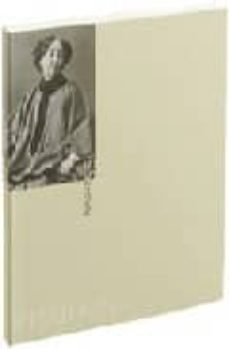Imprescindibles
Ficción
No Ficción
Ciencias y tecnología Biología Ciencias Ciencias naturales Divulgación científica Informática Ingeniería Matemáticas Medicina Salud y dietas Filología Biblioteconomía Estudios filológicos Estudios lingüísticos Estudios literarios Historia y crítica de la Literatura
Humanidades Autoayuda y espiritualidad Ciencias humanas Derecho Economía y Empresa Psicología y Pedagogía Filosofía Sociología Historia Arqueología Biografías Historia de España Historia Universal Historia por países
Infantil
Juvenil
#Jóvenes lectores Narrativa juvenil Clásicos adaptados Libros Wattpad Libros Booktok Libros de influencers Libros de Youtubers Libros Spicy Juveniles Libros LGTBIQ+ Temas sociales Libros ciencia ficción Libros de acción y aventura Cómic y manga juvenil Cómic juvenil Manga Shonen Manga Shojo Autores destacados Jennifer L. Armentrout Eloy Moreno Nerea Llanes Hannah Nicole Maehrer
Libros de fantasía Cozy Fantasy Dark academia Hadas y Fae Romantasy Royal Fantasy Urban Fantasy Vampiros y hombres lobo Otros Misterio y terror Cozy mistery Policiaca Spooky Terror Thriller y suspense Otros
Libros románticos y de amor Dark Romance Clean Romance Cowboy Romance Mafia y amor Romance dramatico Romcom libros Sport Romance Otros Clichés Enemies to Lovers Friends to Lovers Hermanastros Slow Burn Fake Dating Triángulo amoroso
Cómic y manga
Novela gráfica Novela gráfica americana Novela gráfica europea Novela gráfica de otros países Personajes, series y sagas Series y sagas Star Wars Superhéroes Cómics DC Cómics Marvel Cómics otros superhéroes Cómics Valiant
eBooks
Literatura Contemporánea Narrativa fantástica Novela de ciencia ficción Novela de terror Novela histórica Novela negra Novela romántica y erótica Juvenil Más de 13 años Más de 15 años Infantil eBooks infantiles
Humanidades Autoayuda y espiritualidad Ciencias humanas Economía y Empresa Psicología y Pedagogía Filosofía Historia Historia de España Historia Universal Arte Cine Música Historia del arte
Ciencia y tecnología Ciencias naturales Divulgación científica Medicina Salud y dietas Filología Estudios lingüísticos Estudios literarios Historia y crítica de la Literatura Estilo de vida Cocina Guías de viaje Ocio y deportes
JAMES H. RUBIN
Recibe novedades de JAMES H. RUBIN directamente en tu email
Filtros
Del 1 al 3 de 3
PHAIDON PRESS LIMITED 9780714840598
Nadar (Gaspard-Félix Tournachon, 1820–1910) was the most influential photographer of his generation, often cited as the first to raise the medium to the level of art. He is perhaps most famous for his series of outstanding portraits made between the mid-1850s and the 1870s, in which he created a lasting and affecting image of the French cultural élite. His concentration on faces and his Romantic glorification of the individual were crucial elements in his successful style.
Ver más
Tapa blanda
PHAIDON PRESS LIMITED 9780714838267
Impressionism A comprehensive study of one of the most popular art movements.James H Rubin Brings together the most recent research on the most popular and accessible of all art movements Strikes a balance between a chronological narrative and the exploration of the work of individual artists Makes accessible the philosophical, political and social background to Impressionism As well as the acknowledged masters, includes lesser-known but important Impressionists such as Berthe Morisot, Mary Cassatt and Gustave Caillebotte James H Rubin is Professor of Art History at Stony Brook, State University of New York, and also teaches at the Cooper Union in New York City. His books include Impressionism, Realism and Social Vision in Courbet and Proudhon and Manet's Silence and the Poetics of Bouquets, and, in the Art & Ideas series, Courbet.
Ver más
Tapa blanda
PHAIDON PRESS LIMITED 9780714831800
Courbet The entire range of Courbet's work, from landscapes to erotic nudes. Gustave Courbet's (1819-77) unconventional paintings of real people in everyday scenes came to embody values with radical implication Addresses the entire range of his work, including landscapes, portraits and erotic nudes Combines a clear reading of the paintings with a discussion of the personal, political and social framework in which they were created Written by an acknowledged scholar of 19th-century French art James Rubin is Professor of Art History at the State University of New York, Stony Brook, and also teaches at the Cooper Union in New York City. His books include Impressionism in the Art & Ideas series, Realism and Social Vision in Courbet and Proudhon and Manet's Silence and the Poetics of Bouquets.
Ver más
Tapa blanda
Del 1 al 3 de 3

![harry potter y el cáliz de fuego (harry potter [ediciones ilustra das interactivas] 4)-j.k. rowling-9788419868497](https://imagessl7.casadellibro.com/a/l/s5/97/9788419868497.webp)
























